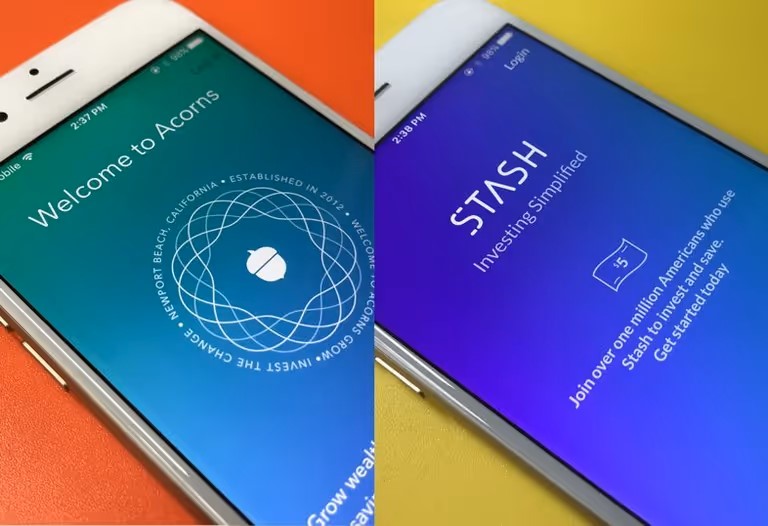Comparing Acorns and Stash: What You Should Know Before Choosing
Investing isn’t just for Wall Street pros anymore—it’s something anyone can do with the right tools. That’s where investing apps like Acorns and Stash come in, simplifying the process so you can grow your money without needing a finance degree. But with so many options, choosing between Acorns and Stash can feel like a tough call. These platforms offer similar goals—helping you invest smarter—but take different routes to get there.

This article dives into how Acorns and Stash stack up, their key differences, and which one might be the better fit for your needs. Whether you're a first-time investor or looking for ways to manage your portfolio, understanding what each app brings to the table is key.
Overview of Acorns and Stash
Acorns and Stash are popular micro-investing platforms designed to help users build wealth effortlessly. Acorns take a hands-off approach, automatically investing your spare change and encouraging small, consistent contributions to grow your portfolio over time. The app simplifies investing by curating diversified portfolios tailored to your risk tolerance. It’s perfect for those who want to set it and forget it.
Stash, on the other hand, offers a more hands-on experience. It allows users to pick individual stocks, ETFs, and curated investment themes, making it a favorite for those who want to learn and actively participate in the market. While it caters to beginners, Stash also provides tools to help users grow their financial literacy, empowering them to take control of their investments.
Though both apps target newer investors, they differ significantly in philosophy and execution. Understanding these differences is critical in deciding which platform aligns with your investment style and goals.
Features and Functionality

Acorns and Stash bring unique features to the table, offering tailored experiences to their users. Acorns operates with automation at its core. Its hallmark feature, Round-Ups, invests your spare change from everyday purchases. For example, if you buy a coffee for $3.50, Acorns rounds the purchase up to $4 and invests the remaining $0.50. This seemingly small contribution adds up over time, making it easy to build wealth without actively thinking about it. Additionally, Acorns offers pre-built portfolios crafted by financial experts, ranging from conservative to aggressive, ensuring there’s an option for every risk preference.
Stash, however, provides a more involved experience. Unlike Acorns, Stash lets you choose where your money goes. You can invest in individual stocks, ETFs, or specific themes like green energy or technology. Stash’s educational resources, including financial tips and articles, empower users to make informed decisions. It also integrates banking features, such as a debit card, to streamline money management. Another standout feature is its fractional shares option, allowing users to invest in big-name companies without needing large sums of money.
While both platforms include retirement account options and goal-based investing, the user experience differs significantly. Acorns thrives on simplicity and automation, while Stash emphasizes education and user control. Your preference between guided investing and DIY investing will likely dictate your choice.
Pricing and Fees

Understanding the costs of investing in apps is essential to evaluate their value. Acorns operates on a subscription model with tiered pricing. The most basic plan, Personal, costs $3 per month and includes investment accounts, retirement accounts, and banking features. For families, the Family plan is available for $5 per month, adding custodial accounts for kids. While these fees seem low, they can add up over time, especially for investors with smaller account balances, potentially eating into your returns.
Stash follows a similar subscription model, offering three tiers: Beginner at $3 per month, Growth at $5 per month, and Stash+ at $9 per month. The Beginner plan is ideal for those just starting, and it includes a taxable brokerage account and educational content. Growth adds retirement accounts, while Stash+ offers premium features such as market insights and custodial accounts for kids. While the pricing is slightly higher than Acorns, Stash justifies the cost with its broader feature set and personalized investment options.
Both platforms charge no trading fees, which is a huge plus for cost-conscious investors. However, when comparing pricing, it’s essential to consider how much value you derive from each platform’s features. For passive investors, Acorns’ low fee structure might be a better fit, while those seeking a more active role in their investments may find Stash’s higher fees worthwhile.
Which Platform is Right for You?
Choosing between Acorns and Stash boils down to how involved you want to be in your investing journey. If you’re someone who prefers simplicity and automation, Acorns might be the perfect choice. Its Round-Ups feature ensures you’re consistently investing, even if you’re not actively thinking about it. Acorns are ideal for beginners who want to grow their savings without delving too deeply into market analysis.
On the other hand, if you’re eager to learn and play a more active role in managing your investments, Stash offers the flexibility and resources to do just that. Its personalized approach to selecting investments, combined with educational tools, makes it a great option for those who want to develop a deeper understanding of the market. Stash is especially appealing to investors who like having control over where their money goes.
Ultimately, your financial goals, investment style, and willingness to pay subscription fees will guide your decision. Acorns is the epitome of "set it and forget it," while Stash is for those who see investing as a hands-on endeavor.
Conclusion
Choosing between Acorns and Stash depends on your investment style and goals. Acorns are ideal for those seeking a hands-off, automated approach to growing their savings effortlessly. In contrast, Stash empowers users who want to actively manage their investments and learn about the market. Both apps make investing accessible, but the best choice comes down to your financial priorities and how much effort you want to put into managing your money. Whether you prefer simplicity or control, both platforms can help you take charge of your financial future.












